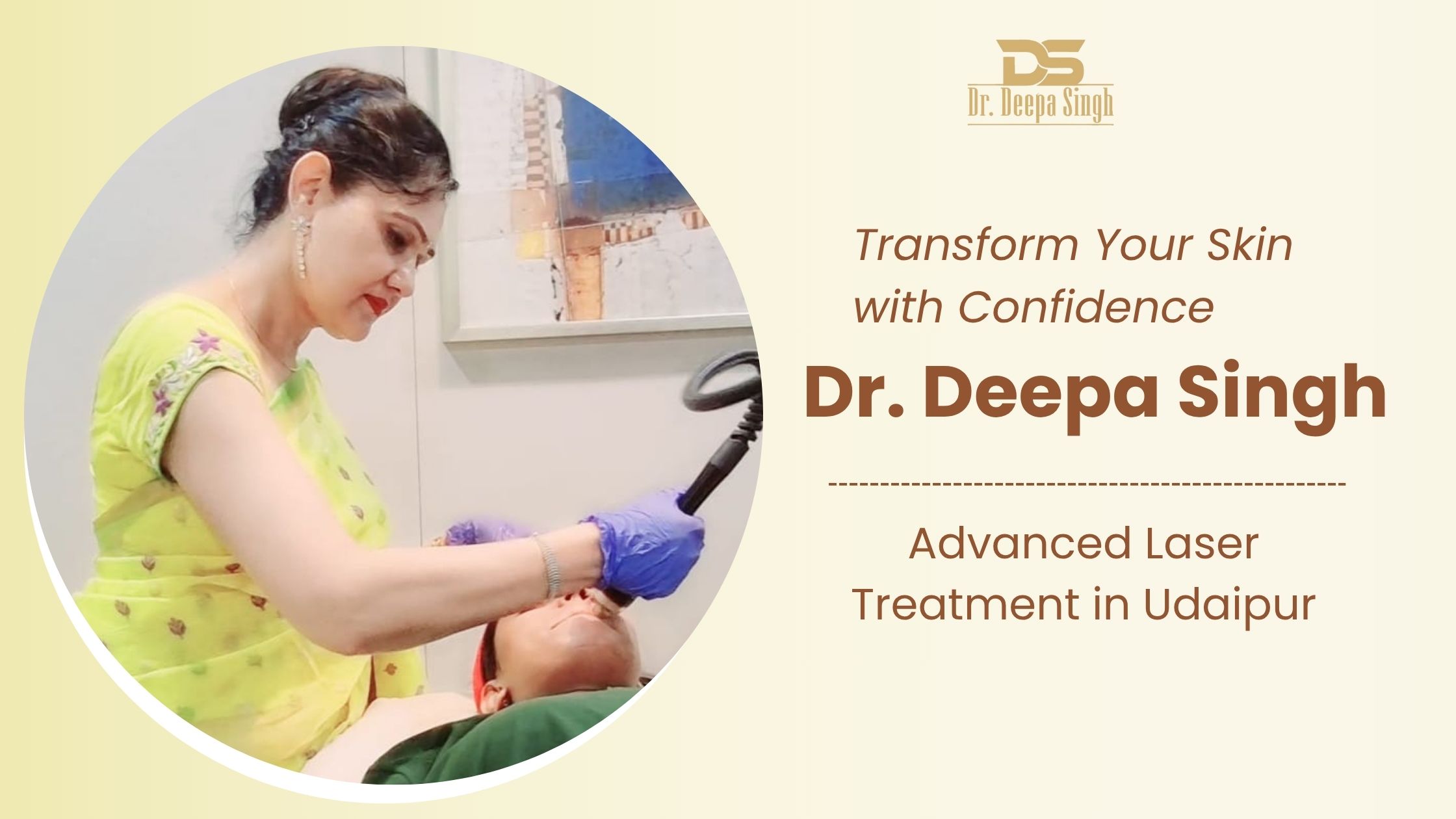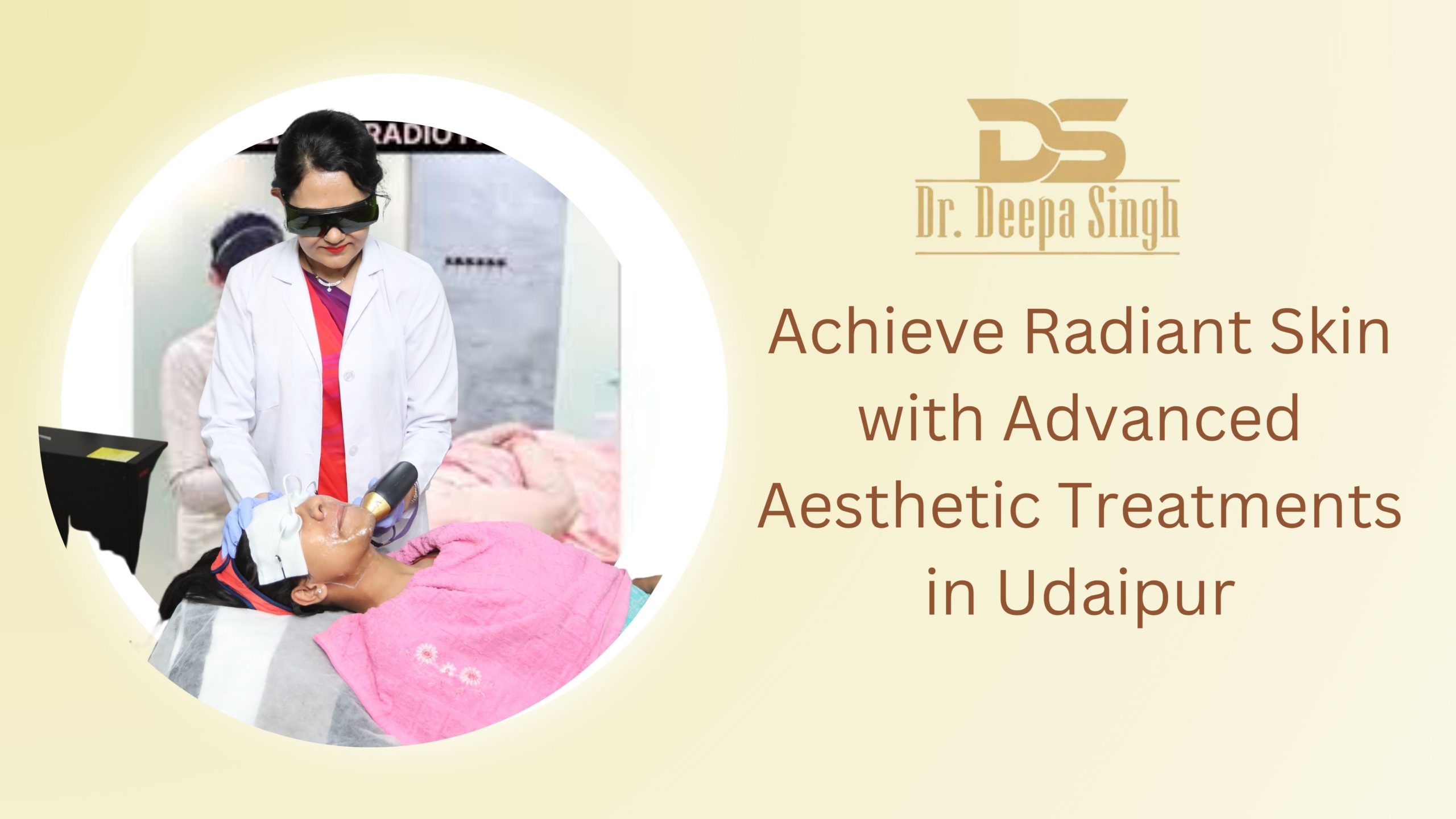Introduction
Pigmentation issues such as dark spots, uneven skin tone, sun spots, and post-acne marks are among the most common concerns for individuals seeking clearer skin. While over-the-counter products offer limited results, chemical peels for pigmentation have emerged as one of the safest and most effective clinical treatments for these concerns.
This advanced chemical solution is gaining popularity for its ability to rejuvenate the skin from within. With years of experience in clinical cosmetology, Dr. Deepa Singh has helped hundreds of clients achieve visibly brighter and even-toned skin through personalized peel treatments.
In this guide, we break down everything you need to know about chemical peels to effectively and safely treat pigmentation.
What Are Chemical Peels?
Chemical peels are advanced chemical solution treatments that use safe, skin-friendly acids to exfoliate the top layers of the skin. By removing dead skin cells and damaged outer layers, these peels stimulate new cell growth, enhance skin texture, and reduce pigmentation.
There are three main types of chemical peels:
✅ Superficial Peels
Mild peels like glycolic or lactic acid that work on the outermost layer of the skin.
✅ Medium Peels
Penetrate deeper, targeting sun spots and moderate pigmentation.
✅ Deep Peels
Intensive treatments, such as phenol peels, are used under strict clinical supervision.
Performed in a professional clinic, chemical peels are a safe and effective treatment that yields noticeable improvements with minimal downtime.
How Chemical Peels Work for Pigmentation
Pigmentation issues often stem from excess melanin production triggered by sun exposure, hormonal imbalance, or acne scarring.
Chemical peels address this by:
✅ Exfoliating the upper skin layers removes pigmented and damaged cells.
✅ Increasing cell turnover, promoting fresh, evenly pigmented skin.
✅ Reducing melanin production gradually with repeated treatments.
This targeted approach makes peels one of the best chemical peels for pigmentation concerns like melasma, tanning, post-inflammatory hyperpigmentation, and even age spots. Under expert supervision, the results can be both dramatic and long-lasting.
Benefits of Chemical Peels for Skin Pigmentation
If you’re wondering why this treatment is preferred over creams or serums.
here are the key benefits of chemical peels for skin pigmentation:
✅ Fades Pigmentation: Dark spots, melasma, and discoloration reduce significantly.
✅ Smoother, Brighter Skin: With exfoliation, your skin texture becomes softer and more radiant.
✅ Boosts Collagen: Chemical peels stimulate collagen synthesis, which improves firmness and elasticity.
✅ Fast Visible Results: Unlike topical treatments, peels show quicker improvement within a few sessions.
✅ Long-Term Improvement: With a series of sessions, long-standing pigmentation can fade noticeably.
When performed at intervals and supported with the right skincare, chemical peels offer lasting benefits for pigmentation and overall skin clarity.
Chemical Peels for Dark Spots: Are They Effective?
Yes, chemical peel treatment for dark spots is clinically proven to be highly effective—especially when tailored to individual skin concerns.
Some of the commonly used peels include:
✅ Glycolic Acid
Great for superficial pigmentation and acne spots.
✅ Salicylic Acid
Excellent for oily skin and post-acne pigmentation.
✅ TCA (Trichloroacetic Acid)
Works well for deeper pigmentation and sun-damaged skin.
However, not every peel is suitable for everyone. A proper skin evaluation is essential before selecting the right formulation and concentration. That’s why consulting an experienced professional like Dr. Deepa Singh is key to achieving safe and desirable results.
Choosing the Best Chemical Peel for Pigmentation
Selecting the best chemical peel for pigmentation depends on several factors:
✅ Skin Type
Sensitive, oily, or combination skin requires different peel types.
✅ Pigmentation Depth
Surface spots vs. deep dermal pigmentation.
✅ Previous Skin History
Allergies, acne, or other skin conditions.
For instance, glycolic acid peels work well for beginners or mild pigmentation, while TCA peels are ideal for stubborn or deeper marks.
At Dr. Deepa Singh’s clinic, every client receives a personalized treatment plan ensuring the safest and most effective outcome based on their unique skin needs.
What to Expect: Procedure, Recovery & Aftercare
Here’s a quick walkthrough of what happens during a peel session:
✅ Cleansing
The skin is gently cleaned and prepped.
✅ Peel Application
The selected chemical solution is applied for a few minutes.
✅ Neutralization
The peel is then neutralized and removed.
✅ Soothing Mask or Serum
Applied to calm and hydrate the skin.
Recovery typically involves:
✅ Mild redness for 1–2 days.
✅ Gentle peeling of skin over the next 3–5 days.
✅ Avoid direct sun exposure and use sunscreen daily.
Post-care instructions are crucial to maintaining results and preventing complications. Dr. Deepa ensures every client receives detailed aftercare guidelines.
Safety, Side Effects & Who Should Avoid Chemical Peels
Chemical peels are considered safe when done under professional supervision.
However, some mild and temporary side effects may include:
✅ Redness and dryness
✅Light flaking or peeling
✅ Mild sensitivity to sunlight
Dr. Deepa Singh conducts a thorough consultation before recommending peels, ensuring the treatment is right for you.
Why Choose Dr. Deepa Singh for Chemical Peels
When it comes to pigmentation treatments, experience matters.
Here’s why clients trust Dr. Deepa Singh:
🎓 Highly Qualified Clinical Cosmetologist with years of hands-on expertise.
🔬 Uses medical-grade formulations and advanced techniques.
🧴 Offers tailored solutions based on detailed skin assessment.
❤️ Has helped numerous patients achieve pigmentation-free, healthy skin.
✨ Book your consultation today and explore how the right peel can transform your skin.
Conclusion
To wrap it up, chemical peels for pigmentation are one of the most reliable clinical treatments available today. They go beyond surface-level results and offer deeper, longer-lasting skin correction.
With multiple benefits of chemical peels for skin pigmentation, from fading dark spots to boosting skin health, this treatment is perfect for anyone struggling with dullness or discoloration.
✅ Ready to say goodbye to pigmentation? Book a personalized consultation with Dr. Deepa Singh and discover the peel that works best for your skin!








